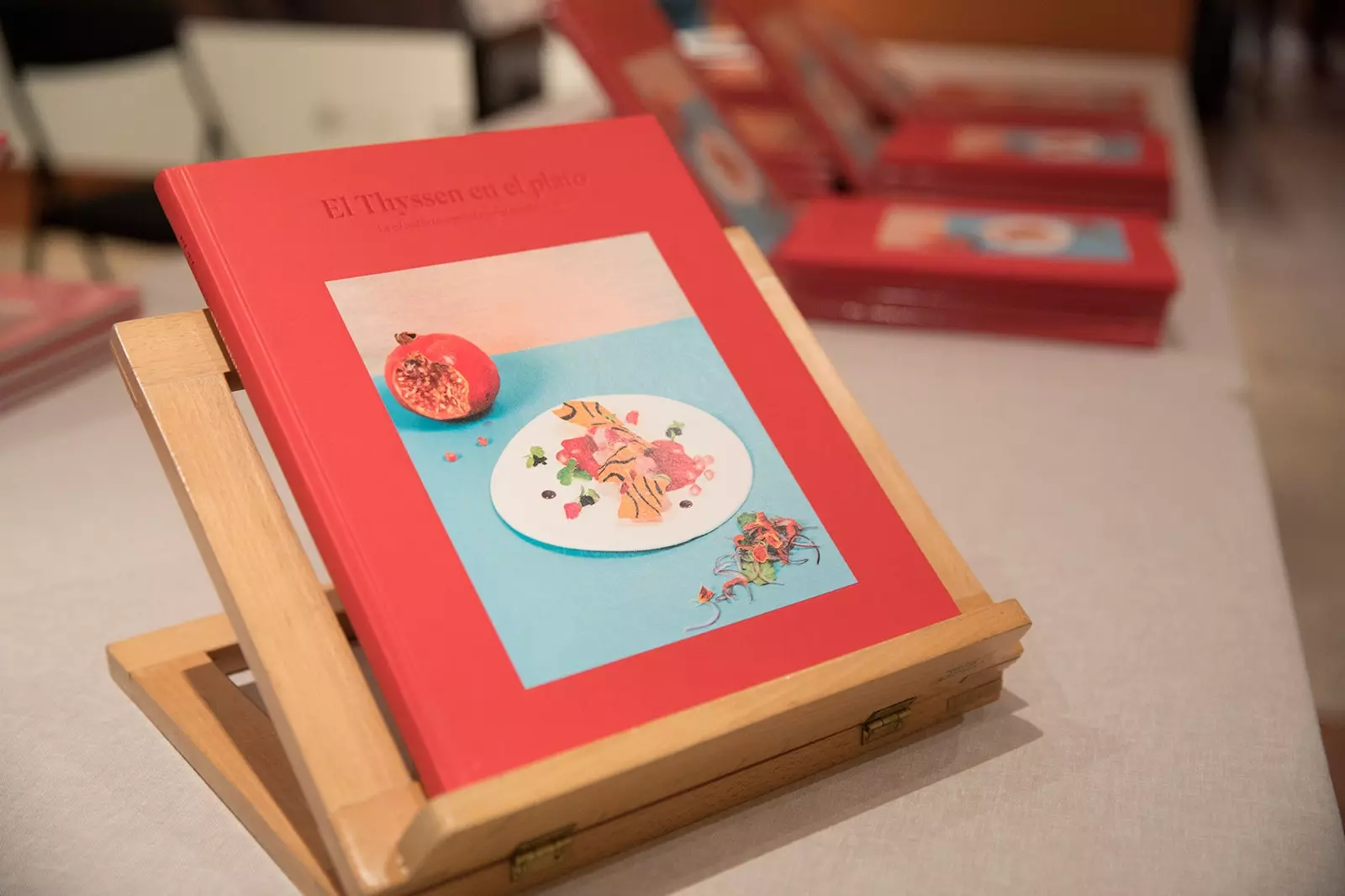
'The Thyssen on the plate'
It is not the first time that the Thyssen-Bornemisza National Museum flirt with gastronomy. In fact, it has long been offering a gastronomic journey through some of the works in the permanent collection and has recently developed ** the Delicathyssen line ** within the art gallery shop.
With ** The Thyssen on the plate ,** a recipe book configured for 25 dishes devised by many other renowned Spanish chefs, the museum goes one step further and invites us to travel through taste, understood as meaning and aesthetics.
The selected chefs have toured the rooms of the Thyssen looking for inspiration in a museum painting. Each of them has chosen a work and made a recipe.
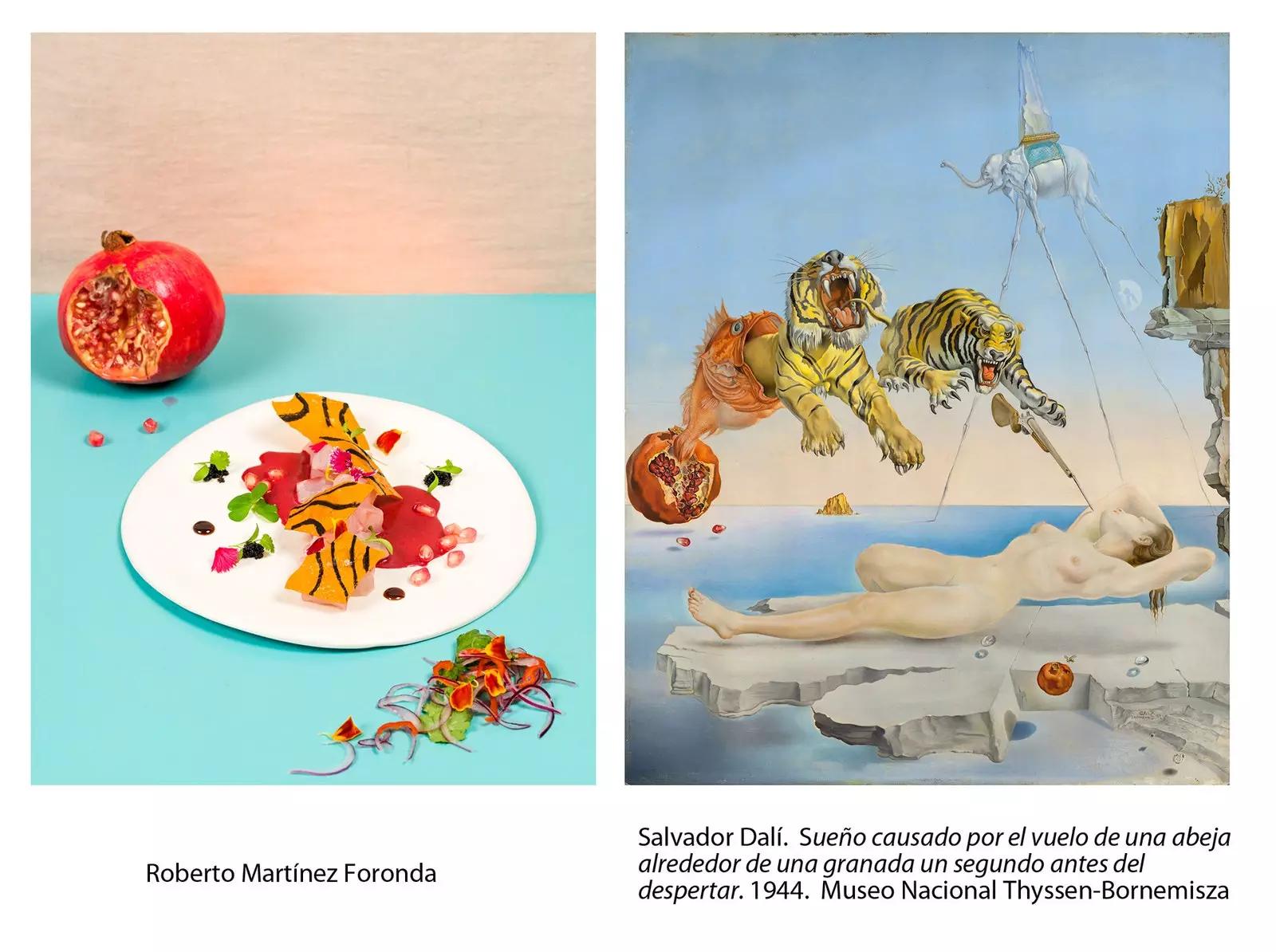
Creation of Roberto Martinez Foronda
“Some have chosen millimetric and literal reproductions, others by free and poetic interpretations. It's like seeing the exhibition again in another way, as if we were somehow discovering what the paintings taste like,” says Guillermo Solana, artistic director.
We highlight the ten compositions that have caught our attention the most.
ROBERTO MARTINEZ FORONDA - SALVADOR DALI
Gala ceviche - Dream caused by the flight of a bee around a pomegranate an instant before waking up, 1944
“I wanted it to be something easy to understand and simple, since Dalí is much more surrealist”, specifies its author. Thus, in the creation that illustrates the cover of the book, Martínez Foronda has opted for represent the figure of Gala through the fish in its natural state, stripped of its skin, raw.
It is wrapped on the outside with some slices of sweet potato, that simulate the skin of tigers. The orange color, dominant in the painting, appears on the plate through the scorpion fish, which is accompanied by some sweet honey notes of black garlic, as if they were bees, and of a sour, citric, sweet, fresh and spicy sauce, made with pomegranate and red fruits (tiger milk).
ANDONI LUIS ADURIZ - LUCIO FONTANA
Decadentia: smoked eel mousse and flowers with a sugar fork - Venice was all gold, 1961
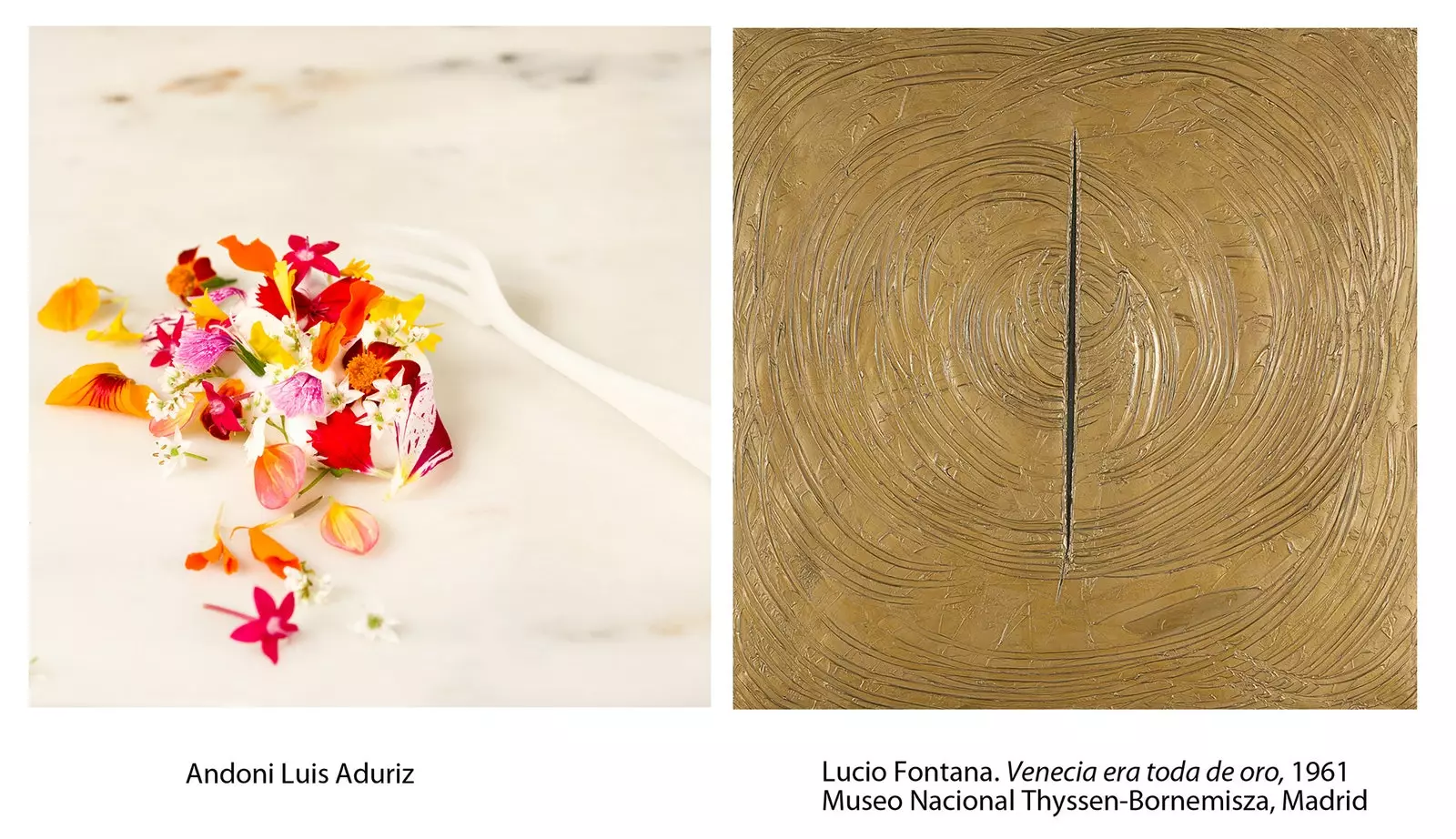
Lucio Fontana eats like this
While in the work of Lucio Fontana a critique of society is made through the textures of the materials, in Mugaritz, homage is paid to human destiny, executing an analogy between the Venetian decadence of the 17th and 18th centuries and that of current gastronomy, making use of the sugar fork and the flowers.
Perhaps not all of you know that in the Venetian palaces, cutlery was made with sugar, an element more scarce if possible than gold. Frequently after its first use, it was thrown into the canal.
Today, in gastronomy, flowers experience a similar circumstance, "Going from being used with delicacy and sensory sense to being sold in large quantities and used as a mere ornament".
JUAN MARI AND ELENA ARZAK - PIET MONDRIAN
Oyster Mondrian - Color Composition, 1931
"The oyster 'Mondrian' by Juan Mari and Elena y Arzak is a case of manifest heterodoxy, since in it the green color plays a great role, rigorously proscribed by the painter”, Guillermo Solana comments.
For their part, the chefs add: “This seasonal dish for a timeless artist has a nod to the slightly transgressive work of Mondrian”. If the painter constrains the color to the spaces that he himself delimits through black lines, the Arzaks have achieved that the visual aspect transcends borders and grids and that the color floods above its limits.
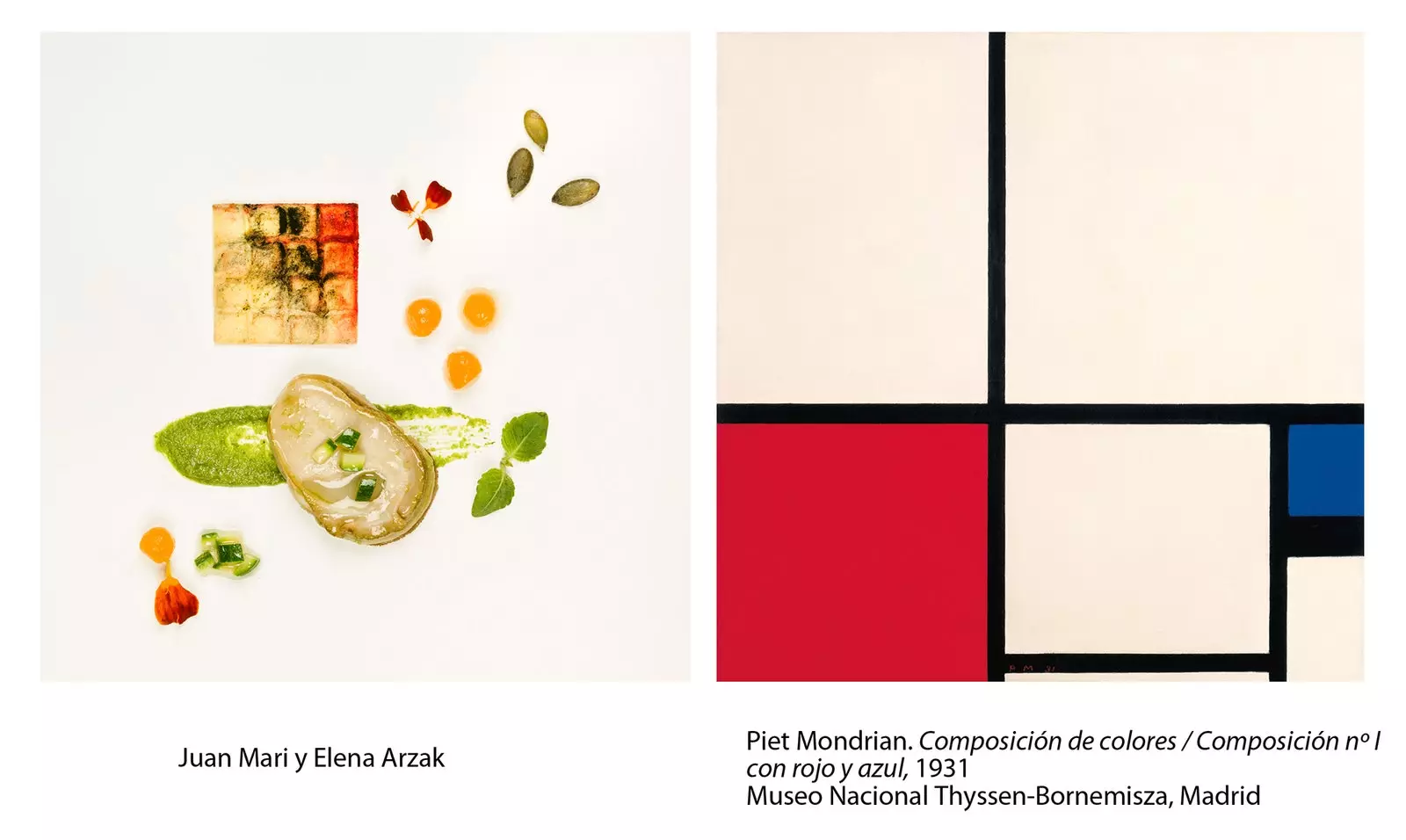
The creation of him is a case of manifest heterodoxy
In its composition we find a colorful, tart gridded biscuit In contrast to and as a complement to the oyster, grey, white and gelatinous.
MARTIN BERASATEGUI - JACOB PHILIPP HACKERT
Milk lamb chop with parmesan buttermilk, donut and asparagus - Landscape with the Palace of Caserta and Vesuvius, 1793
“As soon as I saw the painting by Jacob Philipp Hackert, I felt immersed in the mountains of the Basque Country with the sheep grazing, the taste of our lamb... Hence the choice of this dish. It is a tribute to these mountains, their shepherds and the flavors of yesteryear”, points out the ten Michelin stars.
If you dare with the execution of the recipe, the chef recommends that the best way to taste it is taking a piece of lamb with its juice, a little parmesan whey and a piece of citrus asparagus. Take advantage!
QUIQUE DACOSTA - MAX BECKMANN
Rare Flowers - Quappi in a Pink Sweater, 1932-1934
Max Beckmann's canvas was executed in two phases. In a first _(Frankfurt, 1932) _, the wife and model of the painter appeared with a broad and radiant smile. However, two years later, in 1934, during the couple's clandestine stay in Berlin, Quappi appears with a much fainter and more doubtful smile, fruit of the mood and emotional state that she lived.
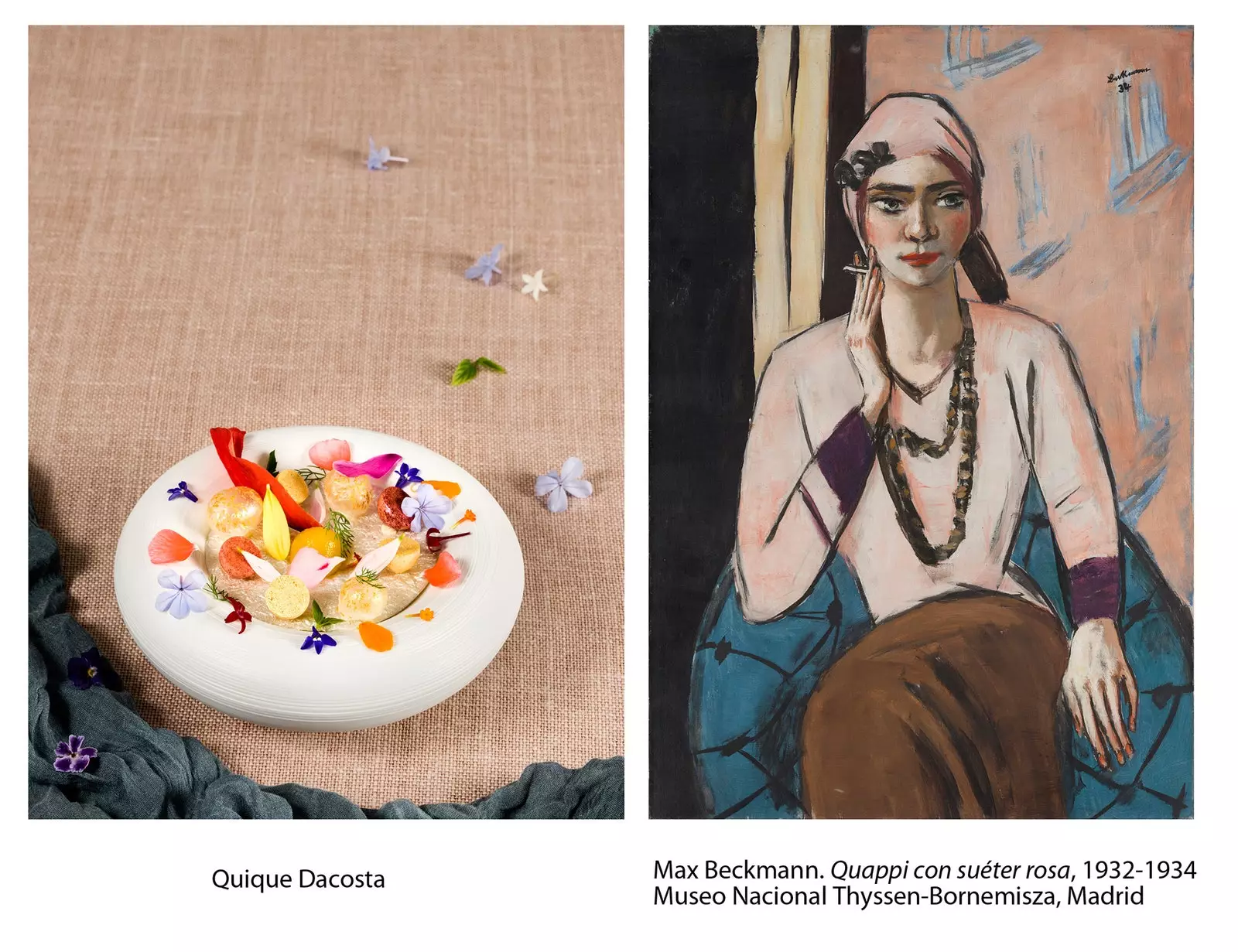
Quique Dacosta delves into the importance of the sentimental and emotional state
A) Yes, delving into the importance of the sentimental and emotional state in those two years key in the development of the work, Quique Dacosta has created "a plate of unctuous, festive, delicate and fragile flavors, where the acids and bitters from the leaves inspirationally contrast the sweetness of Quappi's fragile smile. Bites that evolve from the sweet sap to the acidity of the mango vinegar and the bitterness of the stems”.
DIEGO GUERRERO - MIKHAIL LARIONOV
Old Bread Koji - The Baker, 1909
“Leaving aside the debate about whether cooks make art or not, what is certain is that we are artisans and we provoke emotions”, specifies the two Michelin stars, who has created something – only at first glance – very simple: 'bread for the baker'.
Tradition and avant-garde go hand in hand in Larionov's painting, since the author portrays the baker's job in an unusual way until then, incorporating distorted shapes and bright colors.
In the same way, Diego Guerrero uses an ancient technique, like that of koji, but applied to another carbohydrate, instead of the traditional rice, an old flax seed loaf.
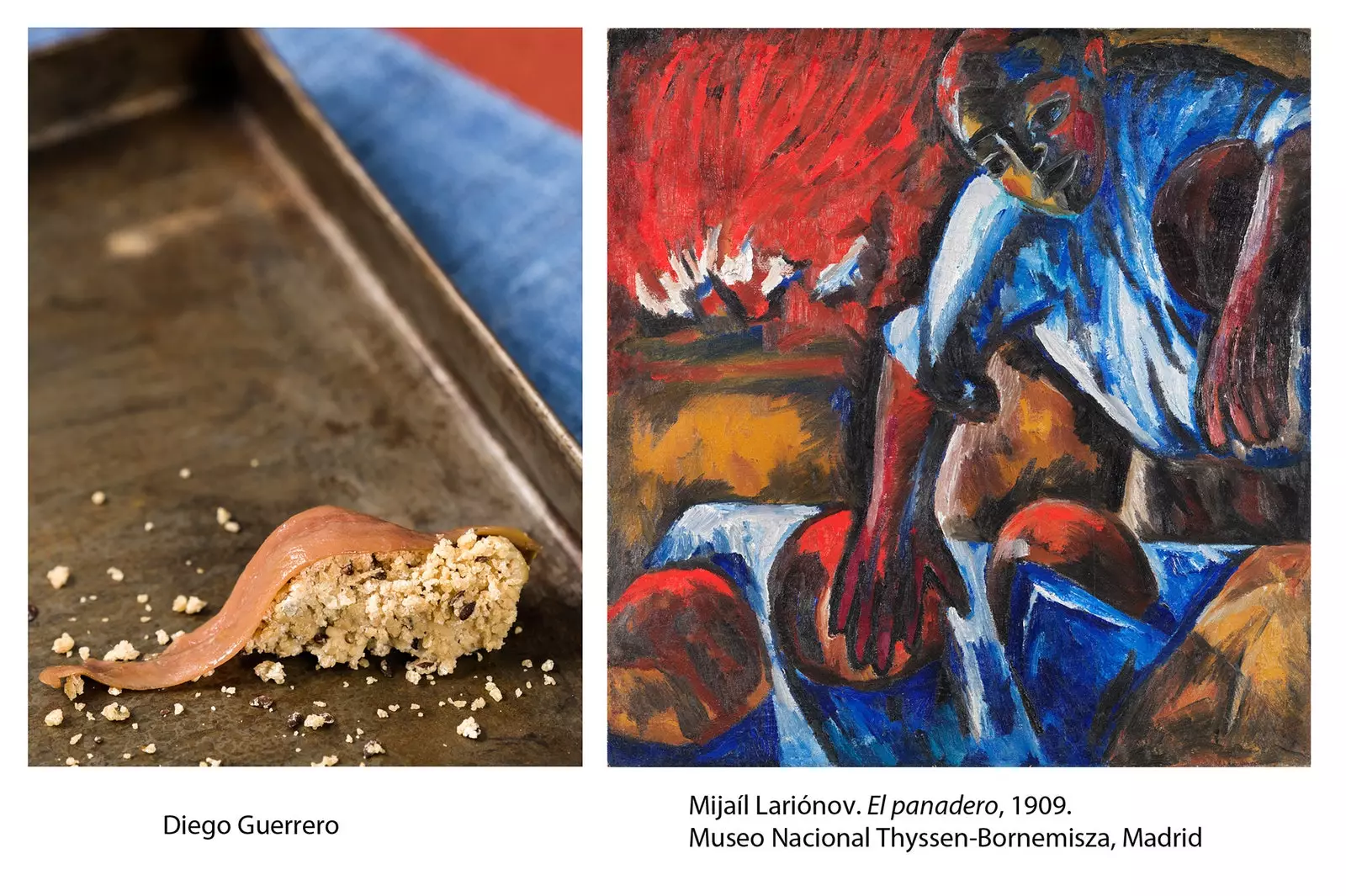
Guerrero emulates Larionov, but in the kitchen
ASCASO PASTRY - JUAN OF FLANDES
Crown of Catherine of Aragon - Portrait of an Infanta. Catherine of Aragon (?), around 1496
“The serenity and strength transmitted by Catalina de Aragón, daughter of the Catholic Monarchs, impacted us from the first moment. A) Yes, we thought of a dessert that could have been tasted at that time” , they explain from this pastry shop on Zurbano street in Madrid.
Crystallized natural roses, as a tribute to the one that Catalina carries between her fingers, are one of the great protagonists of this dessert, which consists of a piece of marzipan with rose water, combined with other flavors much appreciated by the diners of that time: saffron in the yolk and ginger with the pear fruit paste. La Corona can be purchased both at DelicaThyssen and at the workshop's Madrid headquarters.
TOÑO PEREZ - DOMENICO GHIRLANDAIO
Soup of Prickly Pears, Red Fruits and Coconut Ice Cream - Portrait of Giovanna degli Albizzi Tornabuoni, 1489-1490
“It is one of my favorite works of the Renaissance. It transmits calm, serenity and tenderness to me”, clarifies the chef of the two Michelin stars Atrio, who has chosen to carry out a chromatic parallelism between the painting and the recipe.
Soup it has the same golden color as the model's cape, the red fruits that accompany her have their correspondence in the tones of the dress and the paleness of the face and neck of the protagonist can be seen represented in the coconut ice cream.
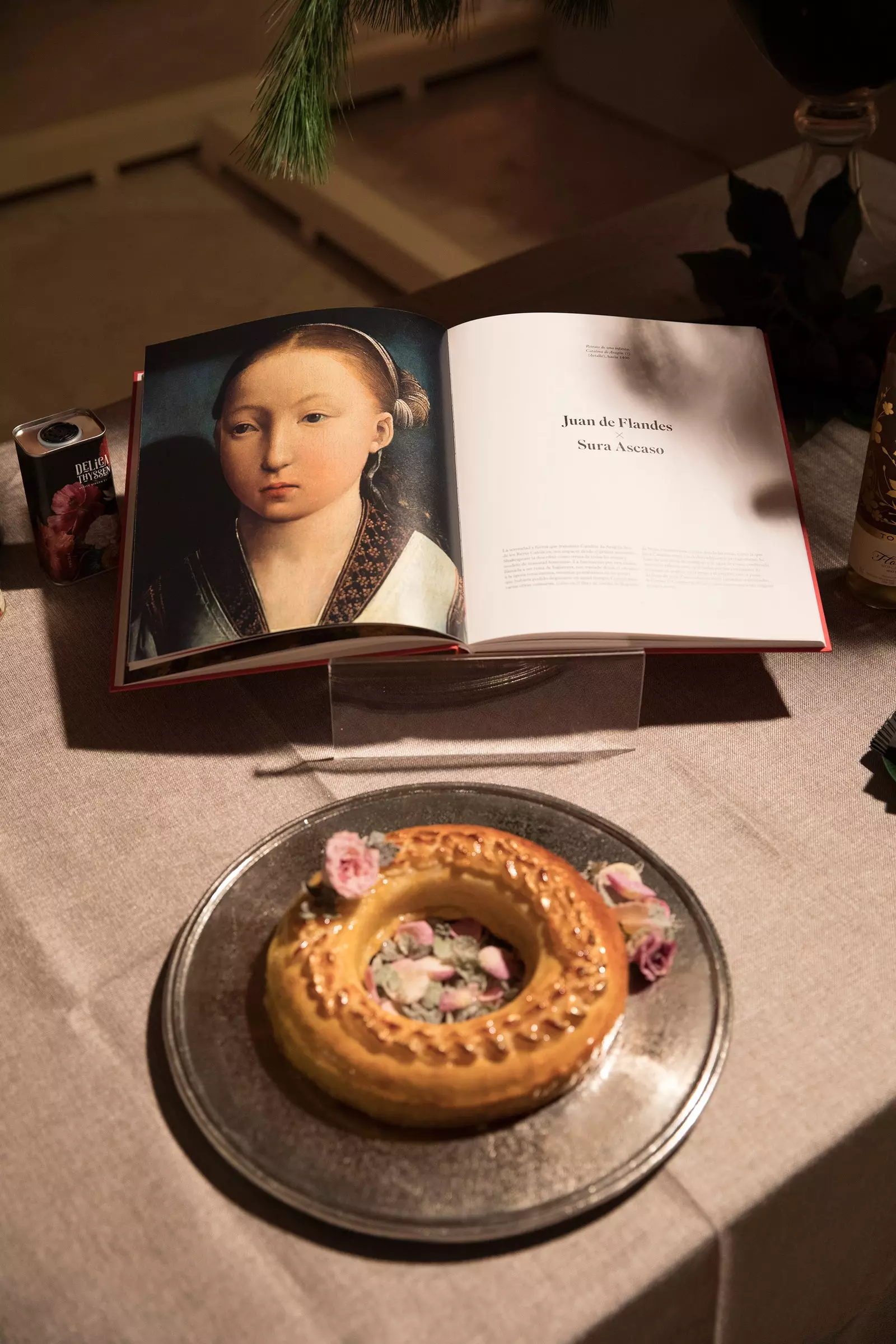
"We thought of a dessert that could have been tasted at that time"
PACO TORREBLANCA - WASSILY KANDINSKY
Yuzu Meringue Tart - Mild Strain n. 85, 1923
It is obvious that the Torreblanca cake is very Kandiskian. According to the master pastry chef, it is "a dessert of aromas and colors with delicate and risky tastes, on a base of an extra virgin oil sponge".
The yuzu cream brings delicacy and provocation, and the Swiss meringue with yuzu and flamed , a few touches of toast. The decoration is made up of different forms of chocolates, with natural flavors such as raspberry, yuzu, passion fruit...
In short, a palette of aromas and colors that take us directly to the art of the Russian painter.
LUCIA FREITAS - GEORGIA O'KEEFFE
white lily n. 7- White lily, no. 7, 1957
“With Georgia I share that love for nature and the intense treatment of color. This chromatic range is the basis of my kitchen, in which brushstrokes of flavors are mixed with different nuances and textures, aromas of fresh herbs and flowers” , explains the Galician cook, author of the gastronomic version of White Lily n.7: Goat and fig cottage cheese with fig cream, honey gel, goat's milk and honey ice cream, sweet and sour gorse flower, dry pollen meringue and honey caramel.
With the aim of capturing the aromas of nature in her recipe, Lucía has recreated the smell of fig trees and flowers, adding the animal contribution of goat's milk and the refined and aromatic nuance of chestnut honey as a link and to transform the dish into a sweet preparation.
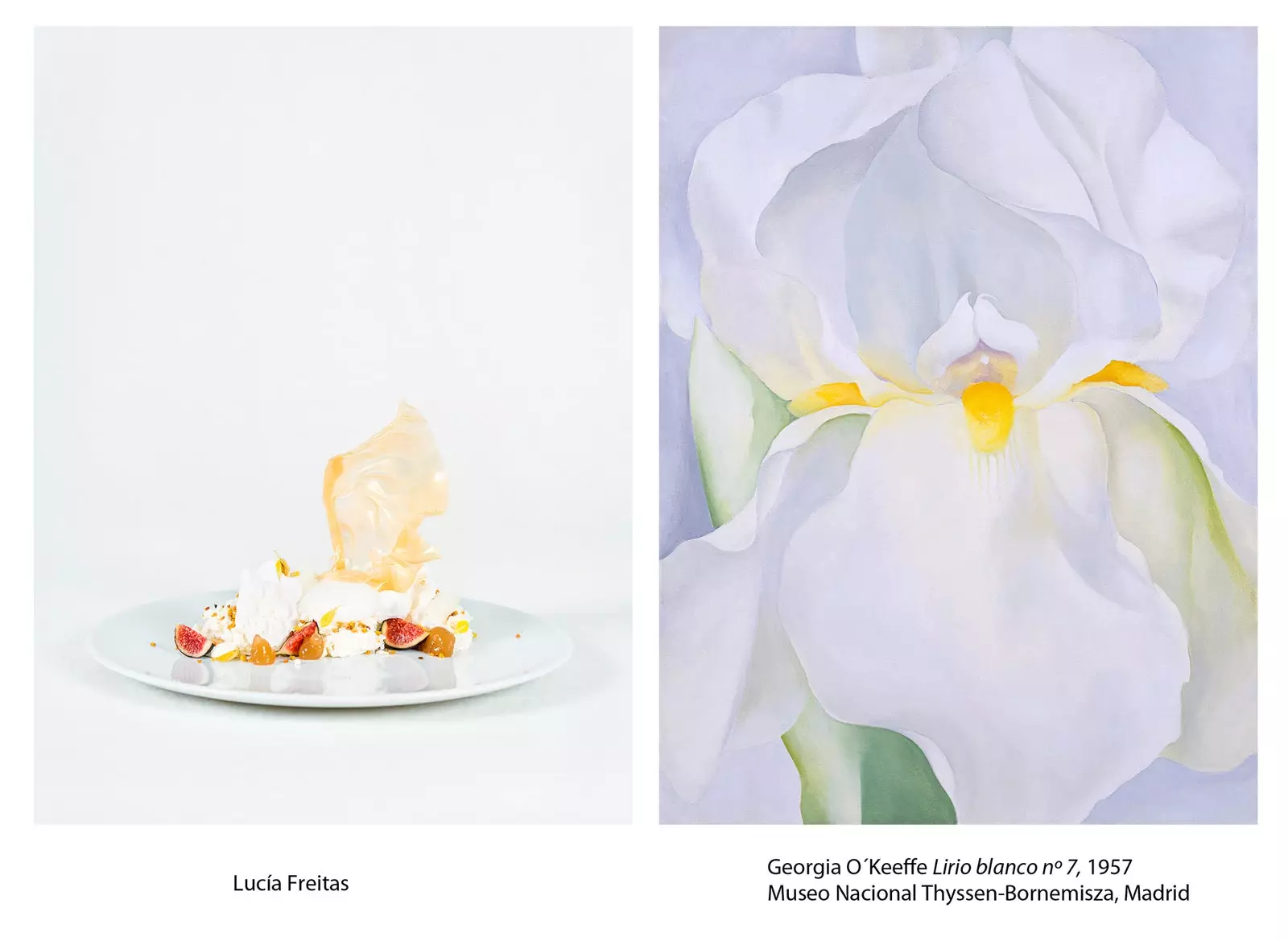
Capture the aromas of nature in your recipe
